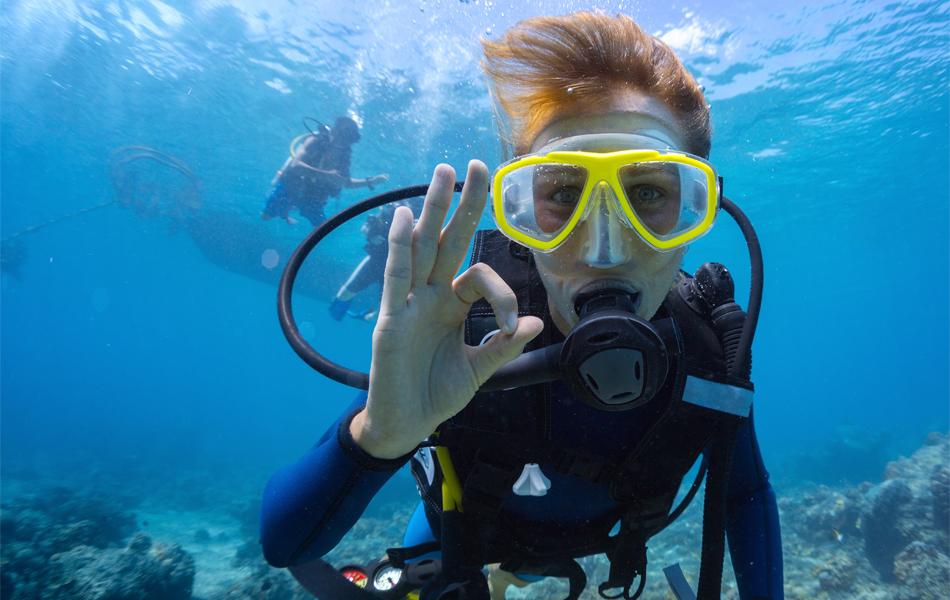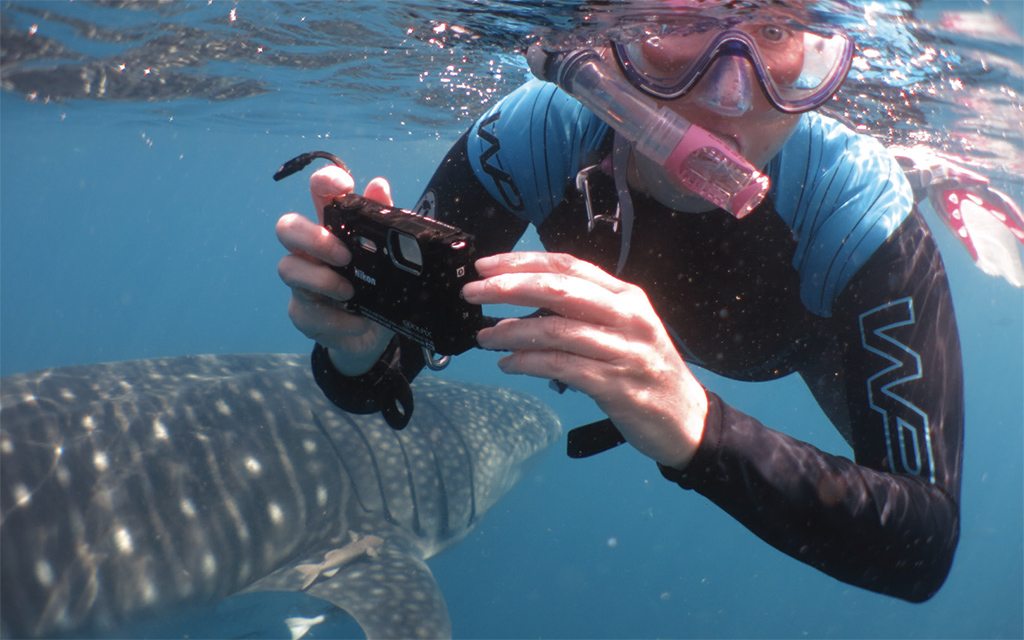
Kristina Pedder interviews the multinational members of this Heinke-winning BSAC club, based in the Middle Eastern nation of Oman.
Ras Al Hamra Sub Aqua Club is continuing to build on its success as the winner of the 2022 Heinke Trophy. Known locally as a friendly and welcoming club, Ras Al Hamra Sub Aqua Club is the seventh overseas club to be awarded BSAC’s premier award during its 64-year history. To win, the club demonstrated high-quality teamwork to deal with a range of hurdles, delivering safe and well-planned diving. It also came across in its submission as very active, with a great atmosphere, so let’s find out what makes the club tick.
When was the club formed?
Ras Al Hamra Sub Aqua Club was founded in May 1982 as a section of Ras Al Hamra Recreation Centre (RAHRC), so 2022 was our 40th anniversary and winning the Heinke Trophy was a wonderful way to recognise the effort put in by all our members. We started out with just 15 members and grew very quickly; now there are more than 60 members, including 10 youth members who can dive with their parents.
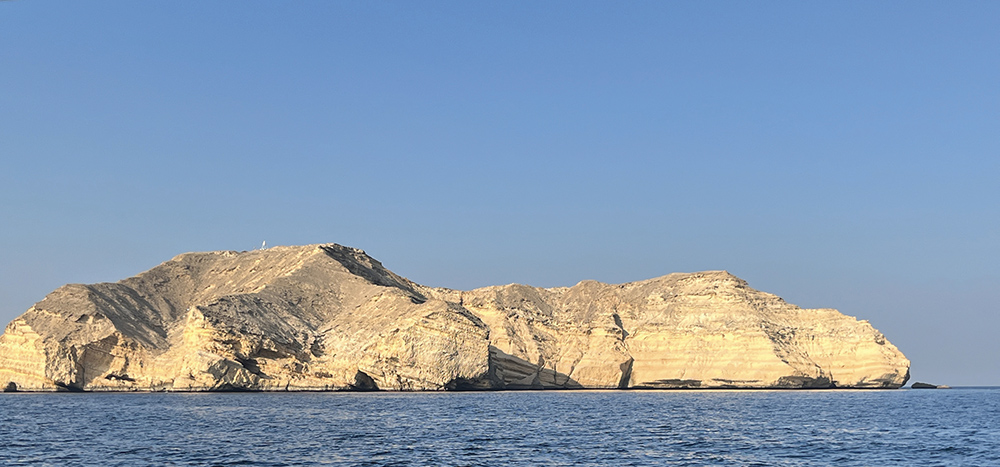
Where are you based?
We are in Qu’rum, close to Muscat in Oman in the Middle East. The Sultanate of Oman is the oldest independent state in the Arab world. It is a wonderful, welcoming and strikingly beautiful country, with spectacular desert, seas and mountains, that we expatriates are lucky to call home for just a few years. Oman is on the south-eastern coast of the Arabian peninsula, sharing land borders with Saudi Arabia, the United Arab Emirates and Yemen. It is relatively easy to get to from Europe and Asia.
Many BSAC members are in the UK, what’s different about being a BSAC club overseas?
The BSAC philosophy and its safety values are very much present in our overseas branch. We probably differ in that we have 23 different nationalities among our members and on a dive boat will have divers from all over the world.
Oman is a Muslim country and as foreigners we must remain respectful of our host country’s beliefs and traditions. As a club, we adhere to the regulations of RAHRC and strictly follow their policies as set out by the Supreme Committee of Oman. The dive club is the most active of the RAHRC sports sections, helping out whenever it can in wider club events and with environmental and safety issues.
We are all very aware how lucky we are to be based here in Oman with its fantastic diving. We also know that for most of us our time here is limited to a few years, so we don’t take anything for granted and seize the opportunity to dive as much as we can. We are lucky to have a great club room and access to the bar of the main club; and we have recently gained access to a pool and a compressor room.
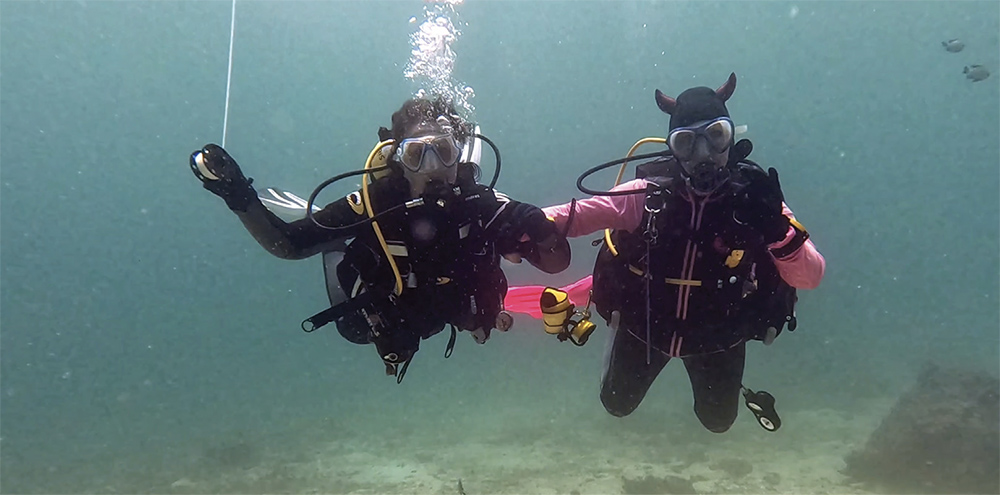
What are your local waters like?
Diveable throughout the year with water temperatures ranging from 20°C to 31°C. When water temperatures are cool, we can find ourselves getting very hot and sweaty on the surface in a 7mm wetsuit but remain just comfortable in the water at depth.
Although diving is year-round, there are rougher periods in February, July and November when storms come in with monsoons (generally the ones affecting India). During this time, diving may be restricted as we can’t launch the boats on the ramp when the waves and wind come in from the north-west. Timing of dives also depends on having sufficient water to launch or recover the boats, so in the winter the tides can lead to some early or late starts. The wind often increases in the afternoon, so we prefer to be back by 2pm.
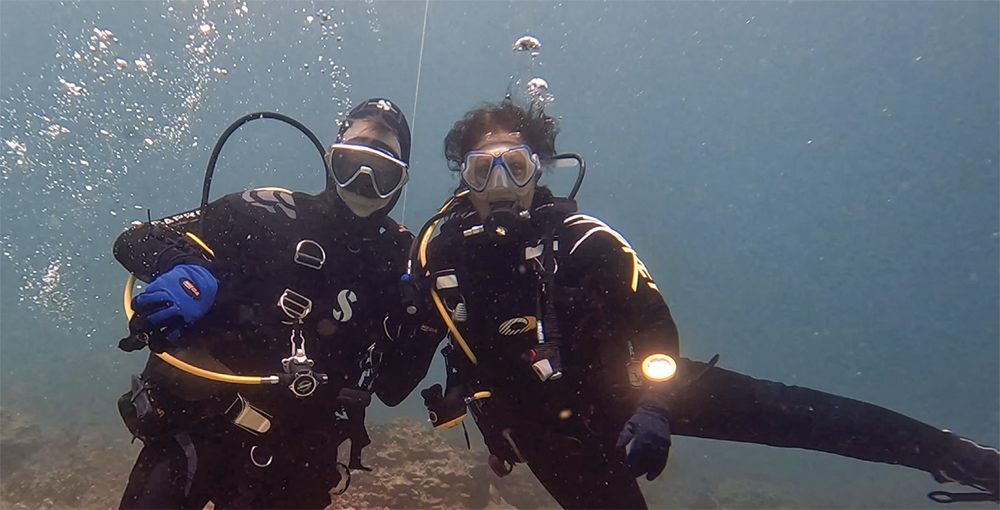
What’s it like underwater?
Visibility can vary from day to day or even from dive to dive; sometimes it’s very clear and sometimes we get what we call “green pea soup”. This is due to strong, cold water upwellings which generate the rapid development of large amounts of phytoplankton. This in turn sustains the diverse and abundant range of marine life that makes the diving here so special.
What do you see?
We have whale shark migrations in May and October and some of the largest turtle nesting sites in the Middle East are found at Ras Al Hadd, Ras Al Jinz, Masirah and the Daymaniyats. Resident turtles include green, hawksbill and loggerhead. There are Arabian humpback whales and Brydes whales are seen in the south of Oman. They are an incredible sight.
We also see super pods of dolphins, both spinner and common dolphins, off the rugged coastline of Bandar Khayran and when we are lucky, at our home dive site, Fahal Island. A dive trip is always extra special if a pod happens to play along in the wake of one of our boats. There are black tip shark nurseries at the Daymaniyat Island Nature Reserve and also on the east side of Fahal Island as well as some sites in Bandar Khayran. We have a resident family of elegant eagle rays and occasionally are lucky enough to see leopard sharks and guitarfish, as well as devil rays.
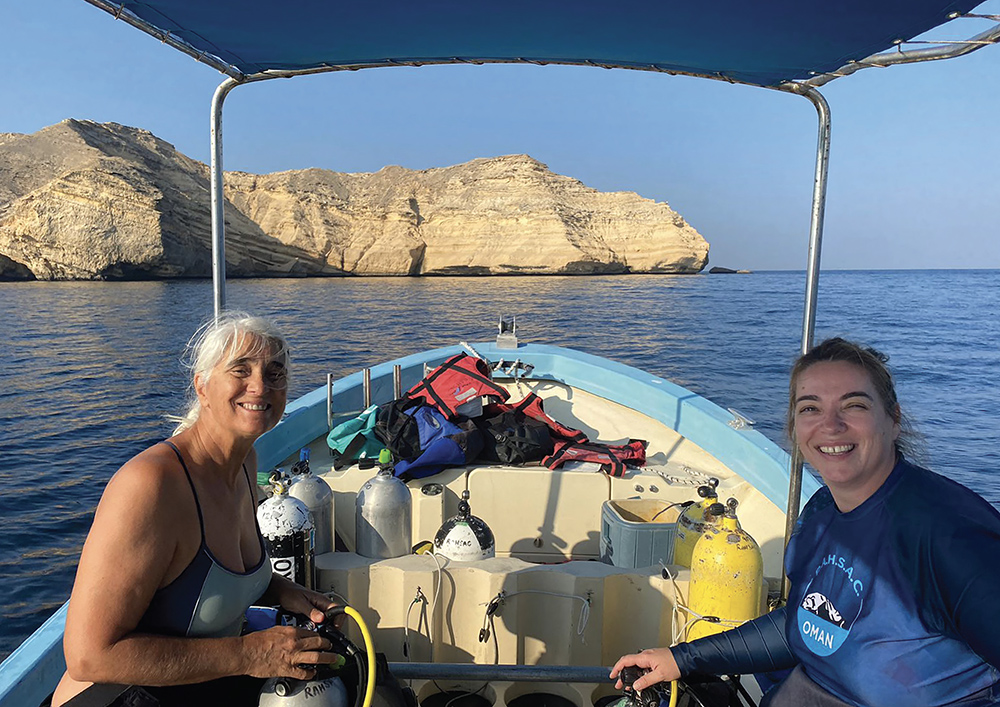
How much diving goes on?
Lots. Most of our diving is recreational diving on reefs and wrecks. A small group of the club are doing more technical, decompression or rebreather diving. We dive every weekend and mid-week, with occasional night dives or after work afternoon dives. Members log a total of more than 1,200 dives in a year. The club has three boats, and a normal day trip could have from eight to 20 divers on it for two dives. We also organise a few longer trips each year. We are, of course, well placed to holiday in Muandam, Salalah, Sifah, Saudi Arabia, Red Sea, and the Maldives.
What type of training is most popular with members?
At the moment we don’t run Ocean Diver courses, but encourage new divers to train locally and then join us for diving and further training, and we are getting a regular stream of new divers this way. We have four Dive Leaders in training and ten Sports Diver trainees at present, whom we train from the beach and on boat dives. We tend to run a course once we get sufficient numbers to start (five to 10) and then schedule accordingly.
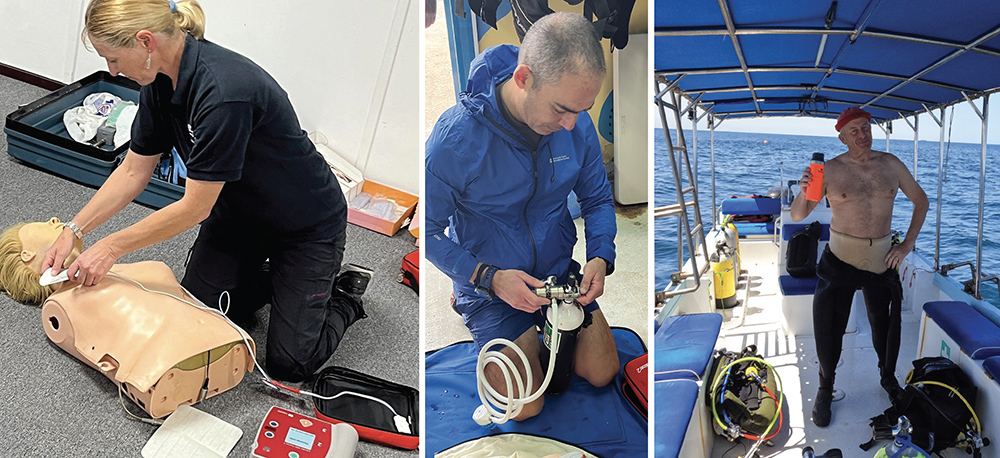
What instructors do you have in the club?
We have three Open Water Instructors and three Advanced Instructors in our training team. We can be stretched when looking after our newer divers and delivering training to more experienced divers. Instructors are developed during visits by overseas National Instructors.
Do you run any Skill Development Courses?
We can run most SDCs up to CCR MOD 2. Recently we ran a compressor course for 12 people. We are running a Trimix Sports Mixed Gas/Explorer Mixed Gas course, and carrying out some Diver Cox’n assessments. We have plans to run Accelerated Decompression Procedures, Nitrox Blender and a Twin-set Diver course.
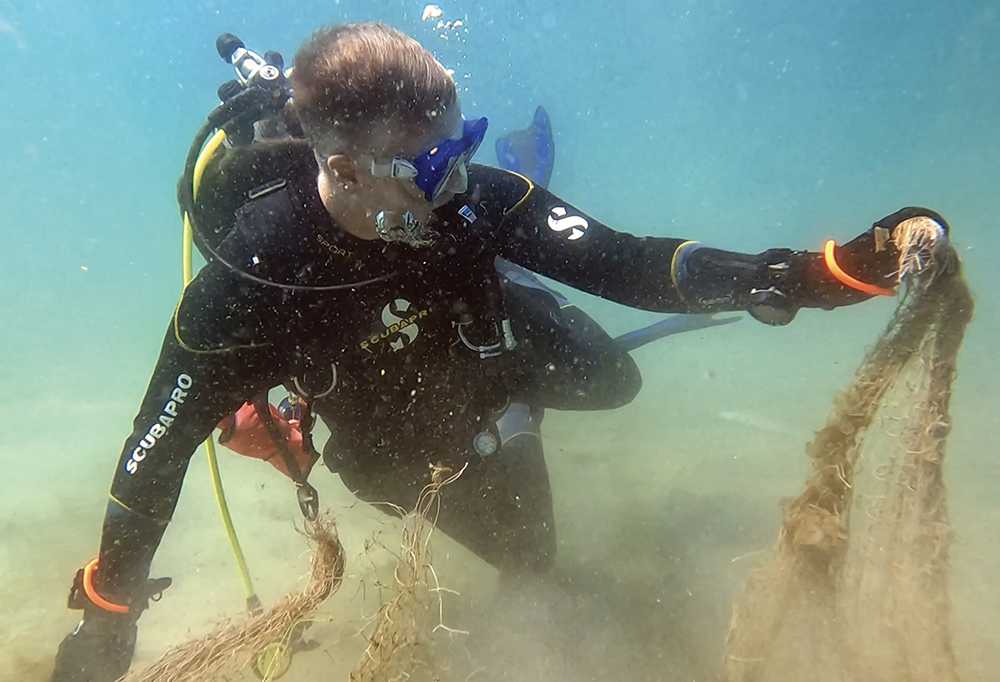
What is the club planning for the next few years?
We are planning to move location and to get more involved in the environmental issues facing Oman. We already do net clearing or seabed clean up dives, and have occasionally done survey dives for ReefCheck, a not-for-profit organisation leading citizen scientists to promote stewardship of sustainable reef communities worldwide.
In March, a BSAC instructor will be coming over so that we can build on our already impressive training team. Ten of our divers will be doing the Open Water Instructor course so that we can start to run Ocean Diver training. This will be a big step for our club and we are very excited.
How do I find scuba diving in the Middle East?
If you're looking to scuba dive in Oman with Ras Al Hamra Sub Aqua Club, please contact Fiona Lemaire.
This Club Focus was originally published in SCUBA magazine, Issue 144 April 2024. For more membership benefits, visit bsac.com/benefits.




